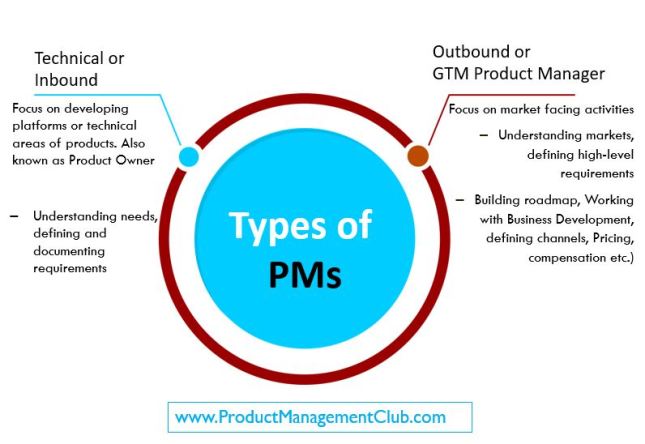We get this question a lot. This is very typical of someone from a technical background (ex. Currently in engineering or related area) thinking of moving to Product Management.
We have all heard about leveraging your strengths. It is applicable in this scenario as well.
Not all Product Managers need to be business savvy. There is opportunity to be fully technical in a Product Management role.
Similarly, if you are coming from non-technical background (ex. Finance), you can also contribute to high-tech Product Management, although the focus will be much different.
In this article, we will explore the two broad categories of the Product Manager role.
As you can see in the picture, these categories are inbound and outbound Product Management.

This division between inbound and outbound PM duties is much more pronounced at larger companies. At a smaller company or a startup, usually one person plays both roles. So if you are looking to get experience in both these areas, it is best to do it at a smaller company or a startup.
You can also use the above picture, if you want to grow into the other area. For ex. If you are an inbound PM, you might want to take steps to get into an outbound PM role.
The Inbound PM role:
As an inbound PM, your role is to develop the product or the platform. You work closely with engineering team, define and document the requirements, attend the scrum. You also develop the roadmap and address the product development as per the roadmap. You work with alpha, beta customers and release the field-ready product.
The Outbound PM role:
As an outbound PM, you do the market research. You identify the target market, the market size, you build out the initial vision of the product. You work with Marketing to define the customer profile, you work with business development to do sales training and enablement. You define the pricing of the product. You lead the overall Go-to-market effort. You define a high-level roadmap of the product.
Overlap of the two PM roles:
At some point, the duties of the inbound and outbound PMs overlap. This is not contradictory but rather complimentary. The product development should happen as per the market requirements, which is why when it comes to the product vision, the roadmap and the requirements, both inbound and outbound PMs are stakeholders and should be aligned.
The evolution of Inbound and Outbound PM roles:
At some point once the product (or the product line) grows to such an extent that you need additional PMs to handle the sub-areas under each of these. If you do a search on a job board like LinkedIn or Simply hired or Dice you will see the following areas under inbound Product Management:
- Platform Product Manager: Widely seen in SaaS (Software as a subscription) type of companies, this person is fully focused on building out the platform.
- UX Product Manager: For B2C companies, where user interface design is very important, one (or more) UX PM(s) is completely dedicated to this area.
- Analytics Product Manager: Seen more in analytics focused companies, this PM helps build out the analytics related capabilities in the underlying product/platform.
On the outbound side, there are two such roles that are increasingly seen:
- Pricing Product Manager: Handles pricing (plans/tiers) across the product (or the entire product line). Also works with the stakeholders like finance or operations to define and execute the pricing strategy.
- Go-to-Market Product Manager: This PM role is focused on defining the entire GTM strategy for the product. This may or may not including the pricing, if there is a dedicated Pricing Product Manager.
Depending on the size of the market, the product line, there could be one or more people dedicated to the outbound PM role.